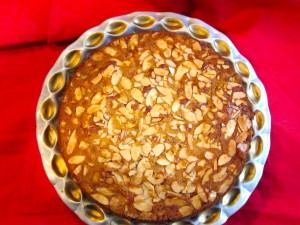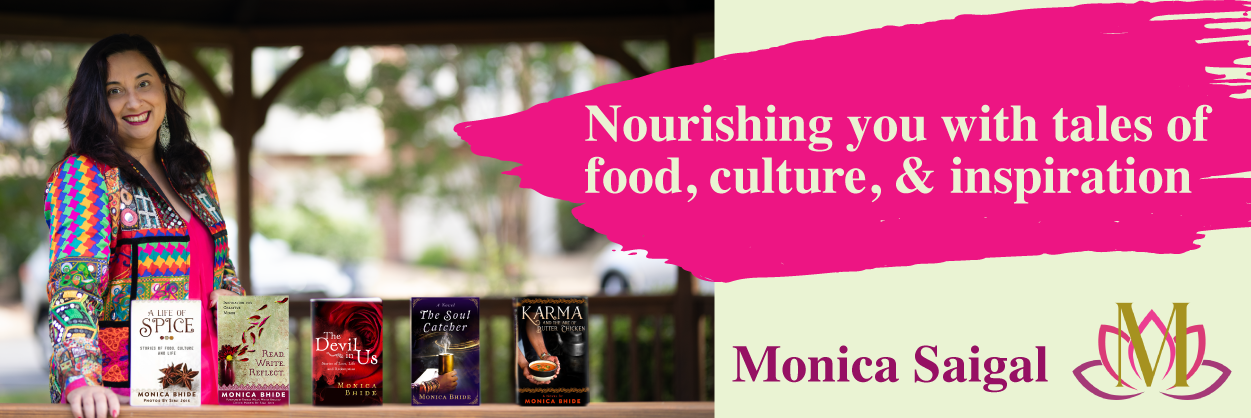Close your eyes and picture this: You are on a hilltop, looking at a dark moonless sky. The dark night, suddenly bursts with brilliant light. Colorful sparkles light up the sky as the firecrackers do their magic. You sense a glow, you look down towards the earth. A stunning view awaits you. Lights as far as your eyes can see. You start to smell, delicious rice pudding, mouthwatering carrot halwa. You hear the children laughing, the bells in the temple chiming, the sounds of chants and prayers being offered. You feel a sense of warmth and well-being. Then you feel as though a gentle hand has patted your head. You, and those around you, have been blessed — it is Diwali.
Welcome, to my memories of the quintessential Indian festival of Diwali or Deepavali (translates to “Rows of Lights”). This festival has crossed boundaries of religion and faith, creating a magical feeling of one community. Passed down through generations, the different intriguing stories of how Diwali originated, all focus on the eternal truth of good triumphing over evil.
The festival of lights is celebrated for five days every year during the darkest part of the Hindu month of Ashwin (October/ November). The celebrations include the lighting of lamps and candles, and the bursting of crackers. Prayers are offered. Sweets are prepared. There are frantic shopping sprees, spring cleaning of home and repainting of walls. People buy new clothes and in fact, in certain communities, it is absolutely essential to wear new clothes on this day.
Google “Diwali in America” and the results over the years have been telling – The Vishwa Hindu Parishad of America urging USPS to create a stamp for Diwali, a young woman on Sulekha.com urging people to sign a petition requesting Google to customize its logo to show Diwali as it does with other non-Indian festivals, BBC has a feature on Diwali in Manhattan and now you can send Diwali e-cards or baskets of Diwali sweets to friends and family back home. Diwali, truly, has found a home in the US in more ways than one.
I grew up outside India and have to confess that I have a fairly romanticized view of the festival. Celebrating it here, in the States, has meant integrating what is near and dear to me in faith along with those who are near and dear to me in person. It has become, at our house, a festival during which we open our doors for an open house party and invite all our friends and acquaintances to drop by and share in the celebrations.
Diwali would not be Diwali without food, and lots of it! And our open house dinner table has been a testament to this – dozens of sweet dishes and savories in multitude of sizes, shapes and colors grace the table on this day. Fortunately, the first few years we celebrated Diwali in the US, we had the pleasure of having either mom or mom-in-law in town They took over the kitchen and created all the specials. From grinding almonds to grating fresh coconut, they prepared endless desserts. Our kitchen would smell of heavenly bliss as the respective moms went into cooking overdrive.
During these initial years our circle of friends was largely Indian and so the Diwali goodies that were purely Indian fit the table perfectly. Over the years our friends circle has begun to look more like a UN delegation as many Indian friends have married people of different ethnic origins and our own g interactions with people from other communities has grown considerably. The differing palates now demand that the dishes be prepared to make everyone happy. Also now more than ever our friends and acquaintances are focused on eating healthier and so I focus on ensuring that the Diwali treats are prepared in a healthful way. I tend to stick to cooking dishes that are easy to make and thus amicable to the working mother of a pre-schooler
The food at our annual Diwali open house today reflects our life. The guests usually bring treats and the baby idlies (rice and lentil cakes) sit side by side with kalamata olives, the pista burfi (Indian milk dessert) sits alongside the glazed almond scones. While my mother and grandmother used to focus on making elaborate (and of course delicious) desserts on my table you won’t find the traditional Indian desserts. I do focus on creating simple yet flavorful dishes and our table is adorned with – the ever-refreshing rice kheer and David Lebovitz’s Cardamom Pistachio Cake!
Festivals and traditions really are what you make of them. Our Diwali in America celebrates different cultures and yet a shared sense of identity
I wish you and yours a very Happy Diwali!
Pistachio Cardamom Cake:
Adapted from
Ready for Dessert: My Best Recipes (April 2010, Ten Speed) by David Lebovitz
 Makes one 9-inch (23-cm) cake; 10 to 12 servings
Makes one 9-inch (23-cm) cake; 10 to 12 servings
At one time, everything I knew about Indian cooking could fit on one bindi dot. It wasn’t until Niloufer Ichaporia King came to work with us at Chez Panisse, where each year she guided us through the preparation of a traditional Parsi New Year’s feast, that I tasted authentic and wonderfully aromatic Indian food. My favorite dish was a cake enrobed in a sheet of gold leaf, a stunning touch that lent the dessert the splendor worthy of a Bollywood musical.
This is my version of that cake, but I left out the gold, since it’s not something you’re likely to have on hand. I did, however, brighten up the batter with vibrant green pistachios, which should be more easily found in grocery stores than sheets of gold leaf.
Topping
2 tablespoons (1 ounce/30 g) unsalted or salted butter
1 teaspoon sugar
3/4 cup (60 g) sliced almonds, preferably unblanched
Cake
3/4 cup (95 g) shelled unsalted pistachios
1/4 cup (35 g) plus 3/4 cup (110 g) all-purpose flour
2 teaspoons cardamom seeds
1/2 cup (4 ounces/115 g) unsalted butter, at room temperature
1 cup (200 g) sugar
3 large eggs, at room temperature
1 teaspoon baking powder
Pinch of salt
Preheat the oven to 350°F (175°C).
To make the topping, melt the 2 tablespoons (1 ounce/30 g) butter in a 9-inch (23-cm) round cake pan set directly on the stovetop over low heat. Once melted, remove from the heat and let cool briefly. Sprinkle the 1 teaspoon sugar evenly over the melted butter, then add the almonds, tilting and shaking the pan to distribute them evenly. Set the pan aside.
To make the cake, in a blender or a food processor fitted with the metal blade, pulverize the pistachios with the 1/4 cup (35 g) flour until as finely ground as possible. Transfer to a small bowl.
Crush the cardamom seeds in a mortar and pestle or seal them inside a sturdy plastic bag and crush with a rolling pin. Add the crushed seeds to the pistachio mixture and stir to combine. Set aside.
In a stand mixer fitted with the paddle attachment (or in a bowl by hand), beat together the 1/2 cup (4 ounces/115 g) butter and 1 cup (200 g) sugar on medium speed until very light and fluffy, 3 to 5 minutes. Add the eggs one at a time, beating until completely incorporated.
In a small bowl, whisk together the remaining 3/4 cup (110 g) flour, baking powder, and salt, and stir it into the butter-egg mixture. Stir in the pistachio mixture just until combined.
Spoon the batter into the prepared cake pan by dropping 4 or 5 mounds on top of the almonds. Carefully spread the batter into an even layer, trying not to disturb the almonds. Bake until a toothpick inserted in the center of the cake comes out clean, about 40 minutes. Let cool for 15 minutes.
Run a knife around the sides of the cake to help loosen it from the pan. Invert the cake onto a serving plate. Let cool completely.



Happy Diwali, Monica, and thanks for the recipe – I have totry this, as is has two of my favourite things in it – pistachios and cardamom. I really ought to share it with the neighbours, but – it may not get that far.
Can this recipe be made into an eggless cake. I would appreciate it if you can send me one, as this cake is superb, color is nice and green and flavour if cardamon is great, should be good for Raksha bandan, and Diwali to send as gifts, thanks once again.